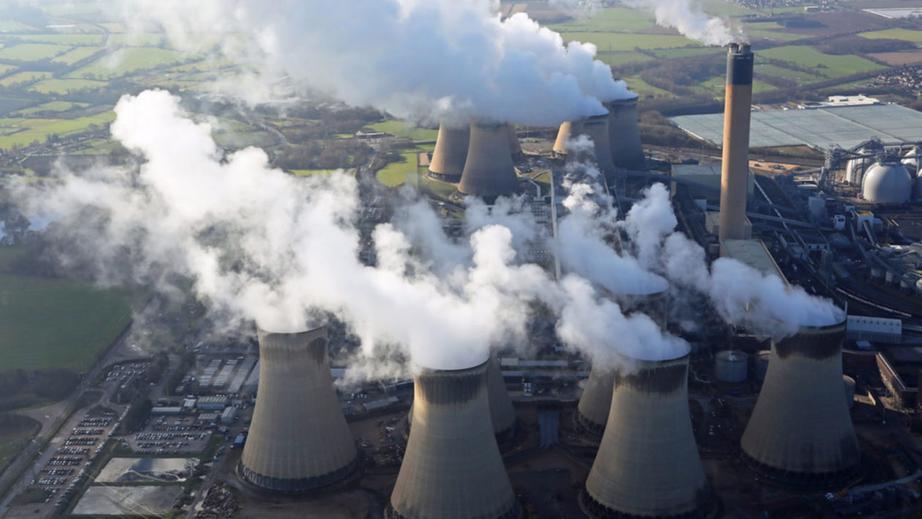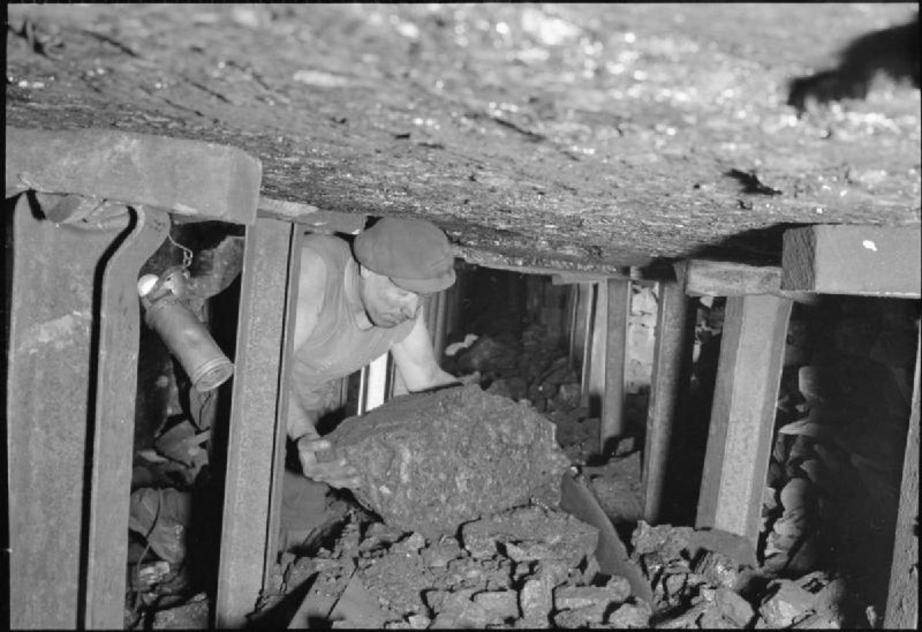Britain moves to end the burning of coal
Britain is phasing out its coal-burning power plants, with the last one slated to be shuttered by 2025, if not sooner. It is a startling development for the nation that founded an industrial revolution powered by coal.
Bigger than any medieval castle, with its 12 giant white cooling towers gleaming in the sun, the Drax Power Station dominates the horizon for tens of miles across the flat lands of eastern England. For four decades, it has been one of the world’s largest coal power plants, often generating a tenth of the U.K.’s electricity. It has been the lodestar for the final phase of Britain’s 250-year-long love affair with coal – the fuel that built the country’s empire and industrialized the world.
 Shutterstock
Shutterstock
But no more.
The coal-devouring behemoth, and the endless trains of railroad wagons feeding it with fuel from coastal ports, is suddenly a relic of the past. In one of the greatest and fastest energy turnarounds in the developed world, the country that brought the world the industrial revolution – a revolution founded and sustained by burning coal – has cut the cord.
King Coal is, almost overnight, being banished from Britain.
When Drax opened for business in 1974, Britain got 80 percent of its electricity from burning coal. As recently as five years ago, the figure was 40 percent. But last year, it was 9 percent, and this summer coal supplied less than 2 percent of Britain’s electricity. On April 21, 2017, for the first time since its inception, the British power grid went 24 hours without coal.
The zing in the power lines now comes almost entirely from natural gas, nuclear, and growing networks of giant wind turbines and solar farms. The government says all of the U.K.’s remaining coal plants will be shut by 2025 – maybe sooner. Drax will live on, but only by burning biomass – mostly wood chips imported from the southern United States.
Coal now only provides occasional back-up energy in the U.K., mostly on sunless and wind-free winter days.
The collapse of coal, the dirtiest of the fossil fuels, has resulted in a sharp drop in Britain’s CO2 emissions from electricity generation. Those emissions fell 50 percent between 2010 and 2016. The average Briton is now responsible for only about a third the CO2 emissions of the average American.
Most of Britain’s 20th-century coal-burning power stations have been demolished, though some live on in a post-modernist landscape. The generating hall of London’s old Bankside power station now houses the Tate Modern art gallery; Apple is about to move its U.K. operation into the renovated shell of Battersea power station, one of the world’s largest brick buildings.
Eight giants of the coal age, including Drax, still stand ready to deliver power. But, as carbon taxes rise and the cost of renewables falls, these plants are slipping down the pecking order of grid suppliers. Coal only provides occasional back-up energy now, mostly on sunless and wind-free winter days, when demand is high and the supply from renewables low.
The trend away from coal is becoming familiar in many developed nations. It is an important reason why global CO2 emissions have not risen in the past three years. Coal’s share of U.S. electricity generation, for instance, has fallen from 53 percent in 1997 to 32 percent last year. Donald Trump’s pro-coal rhetoric is unlikely to change that as long as natural gas is cheaper. In February this year, a month into the Trump era, operators announced plans to shut down the largest coal-burning power plant in the American West, the 2,250-megawatt Navajo Generating Station in Arizona.
But it is the speed of King Coal’s demise in Britain – its first and most important stronghold – that is breathtaking, says Michael Grubb, energy analyst at University College London. It shows what can be done, even in an essentially market-based energy system such as operates in the U.K.
Coal was the foundation of Britain’s rise as the dominant global power in the 18th and 19th centuries. It became the engine of the modern industrialized and urbanized world.
That revolution began with the steam engine – a coal-fueled device for powering a piston by alternately creating and condensing steam. The first steam engines were developed by a lowly English ironmonger named Thomas Newcomen in 1712, and refined a few years later by the more famous Scottish mathematician, James Watt.
Coal-burning steam engines liberated manufacturing industries like textiles from reliance on water wheels. They allowed factories to grow in size and to be built anywhere. As author Barbara Freese put it in Coal: A Human History, coal power “concentrated the factories and workforces in urban areas [and] allowed the industrialization of Britain to gain a momentum that was nothing short of revolutionary.”
Coal allowed Britain to become the “workshop of the world” and to create an empire.
The first great industrial cities, such as Manchester in northwest England, grew by gorging on coal. Coal fuelled giant blast furnaces to smelt iron, steam locomotives that connected cities, and the steam ships that allowed a collection of small offshore European islands to become the “workshop of the world” and to create an empire that at one point covered a quarter of the globe.
By 1830, Britain was producing 80 percent of the world’s coal, and most of the world’s iron. In 1850, its industrial CO2 emissions were six times greater than the next highest nation, the United States.
Then came electricity generation. Britain and coal pioneered that too. The first power station, built by Thomas Edison with coal in its boilers, began powering street lights in central London in January 1882. Edison followed up in New York later that year. Soon, coal-fired electricity was the industrial world’s power source of choice — and coal took electricity generation to ever corner of the planet.
With coal came pollution. London became known as the “big smoke.” In 1952, an estimated 10,000 people died in the capital during a “peasouper” smog. Long before the world became seriously concerned about coal’s contribution to climate change, Europe was worried about acid rain caused by coal burning. British power stations were discovered to be killing fish a thousand miles away in the lakes of Norway.

A miner lifts a lump of coal onto a conveyor belt in a mine in central England in 1944. The last of Britain's deep coal mines was closed in 2015. U.K. Ministry of Information
Coal’s decline in Britain began slowly, with a slump in domestic coal mining that started in the early 1950s and accelerated from the 1980s on. Deep British mines once produced most of the world’s coal. But the last of them shut in 2015, and today only a handful of small strip mines live on. For a while, imports substituted. Drax burned coal from Russia and Colombia. But in the past five years, burning coal of any provenance has become increasingly uneconomic.
Britain’s National Grid buys nuclear and renewable energy first. Thanks in part to carbon taxes and government price guarantees, they are the cheapest. Since mid-2015, when the government doubled carbon taxes, natural gas also became cheaper than coal, because it produces only around half as much CO2 for every watt of power. Gas now produces about a third of the country’s electricity.
But the big story is the rise of renewables. In particular, Britain has pioneered giant offshore wind farms, with each turbine able to generate 8 megawatts. The price of energy from offshore wind has halved in five years, and it is now lower than either nuclear or gas.
Last year was the first during which Britain got more energy from wind than coal – 11.5 percent compared to 9.2 percent.
As a result, 2016 was the first year during which Britain got more energy from wind than coal – 11.5 percent compared to 9.2 percent, with £17.5 billion more investment earmarked in the next four years, according to British energy minister Richard Harrington earlier this month. British wind energy peaks in winter, while solar generates more in summer. In 2016, British solar produced more power than coal for the six-month period from April through September.
Coal’s collapse in Britain reflects a Europe-wide trend. Coal-power production within the European Union has fallen by 20 percent in the past decade. France will close its last coal plant in 2023. Analysts of the Paris climate accord say that to meet its targets, the EU will have to close all of its coal-fired power stations by 2030.
But there are holdouts, notably Poland and Germany, which together now burn half the EU’s coal. In Germany, the decision to abandon nuclear power after the Fukushima accident in 2011 has resulted in a resurgence in burning dirty lignite coal, raising the country’s CO2 emissions and unleashing environmental protests and mine occupations this summer.
One consequence of the collapse of coal has been to pull the plug on the development of technology to capture stack CO2 emissions from power plants and bury it out of harm’s way. The last climate assessment from the UN’s Intergovernmental Panel on Climate Change (IPCC) in 2014 foresaw the “large-scale future deployment” of carbon capture and storage (CCS) as a prime means of curbing emissions. But since then, several planned demonstration projects have foundered.
Germany dropped the idea amid environmental concerns. An EU-funded Dutch scheme hit the buffers in June when private partners pulled out. That announcement came only days after U.S. utilities gave up on a clean-coal project incorporating CCS at Kemper county in Mississippi.
Britain had big plans for a network of pipelines to bury CO2 from its coal plants in former North Sea gas and oil fields; but in 2015 the government cancelled funding. The technology could still be developed for some industrial emissions, but in Britain at least, clean coal is dead because King Coal is dying.
For more than two centuries, coal provided more than three-quarters of British energy – a dependence “much longer than in any other country,” writes Vaclav Smil of the University of Manitoba in his recent book, Energy and Civilization: A History. The lingering effect is that Britain is responsible for 6 percent of all the industrial CO2 in the atmosphere today – more per head of population than any large nation, the U.S. included.
Yet thanks to the demise of coal, Britain’s emissions are now lower than they have been for more than a century, and they continue to fall. The world needs to follow.
For the rest of this article please go to source link below.

